— November 5, 2018
Finding products to sell online is not a hurdle exclusive to new online shop owners. The search for new products is a constant task for growing eCommerce businesses and a vital component of scaling your business the right way.
No matter what niche you’re selling in or plan to start your eCommerce business in, you shouldn’t just be looking at trending products.
Why? Because best-selling products are dynamic.
To grow a successful online business, you want to always ensure that any trending products you add to your store fit your brand, your market and your budget. You also want to try to have your own spin on it if you want to enter an already saturated market.
Many online store owners find themselves in a bit of a chicken and egg conundrum. Do they find products and build the niche around them, or do they determine their niche first and then find products to fill that niche? The answer is always the latter.
Here’s why:
Yes, researching products online can help direct you to category segments for your store, but ultimately, you first need to know who you’re selling those products to. Choosing a niche means defining target audiences; it means creating a brand and therefore loyalty. And it means casting a small net with more chances to convert, that you can later widen (scale) as you grow.
To help you do just that, we’ve put together this How to Find Products to Sell Online in 2 Steps guide to get you started.
Step 1: Find a Best-Selling eCommerce Niche
The most successful eCommerce industry is apparel and accessories (19.7%), followed by computer and consumer electronics with 14.8%, according to eMarketer.
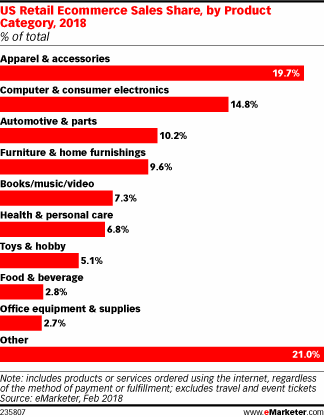
That doesn’t mean you can start an online clothing store and expect customers to instantly line up out the door – so to speak. Within each of these broader categories, there is an abundance of niche segments that you could cater to. You want to choose products that fit into your specific niche, allowing you to segment further. The benefits of selling in niche categories include:
- Less Competition: The more niche you go, the less competition you will have. This will help you gain market share more quickly and give you the competitive advantage on everything from Google Shopping campaigns to holiday promotions.
- Increased Profits: Selling in a smaller niche means more niche products and a better-defined target audience. This will help you with your marketing, bringing more targeted traffic to your store that is more likely to convert.
- Building Loyalty: Going niche will ensure you can establish yourself as the authority within that niche. This, in turn, will position you as an expert and help to build customer trust and brand loyalty, both of which are imperative to the success of an eCommerce business.
- Lower Ad Spends: Lastly, the more segmented your target audiences are, the more likely you can convert them with marketing campaigns. This means well-optimized.
Ultimately, the secret to finding popular eCommerce niches is balancing your sales opportunities, market gaps and passions.
Here is a quick summary of ways to choose your niche from our full How to Find a Profitable Niche for Your Online Store guide:
1: Look in areas where your passions lie
2: Identify who your target shoppers are
3: Ask yourself whether you can add value to this segment
4: Research industry trends
5: Research product possibilities
6: Look at the margins and possible profits in each potential niche
7: Research your possible competitors
The bottom line is that there is no magic niche that will instantly make your store successful. You need to find the right mix of passion, value and potential and then work hard to drive those sales.
Step 2: Find The Best Products for Your Niche
Yes, selling trending products is great, but finding products for your store that actually sell is about so much more than that. It’s about finding popular products that fit your brand and niche, while also ensuring they fit your target shopper and solve their ‘problems.’
Here are our top tips for researching, brainstorming and finding new best-selling products for your store.
1. Identify Possible Products that Solve a Problem
The first place to look is your existing customers. With the help of your audience sales metrics (i.e., your top-selling products, who’s buying them and their demographics) and crowdsourcing (surveys and social engagement posts), you can gather data on which pain points your products are currently solving. This will help you identify additional new products that can fill in those ‘problem’ gaps.
2. Find Smaller Segments Within Your Niche
Next, you want to look at your current niches and categories and see where you could segment further. Let’s say you’ve started an online clothing store selling printed t-shirts in three main categories: women, men and kids. The obvious smaller segmented niches for the latter could be ‘kids baseball tees’ or ‘kids long sleeves.’ However, you could drill this down into theme niches as well, to get new creative products within your brand. A good example of this is The Mountain’s dinosaur t-shirt niche segment.
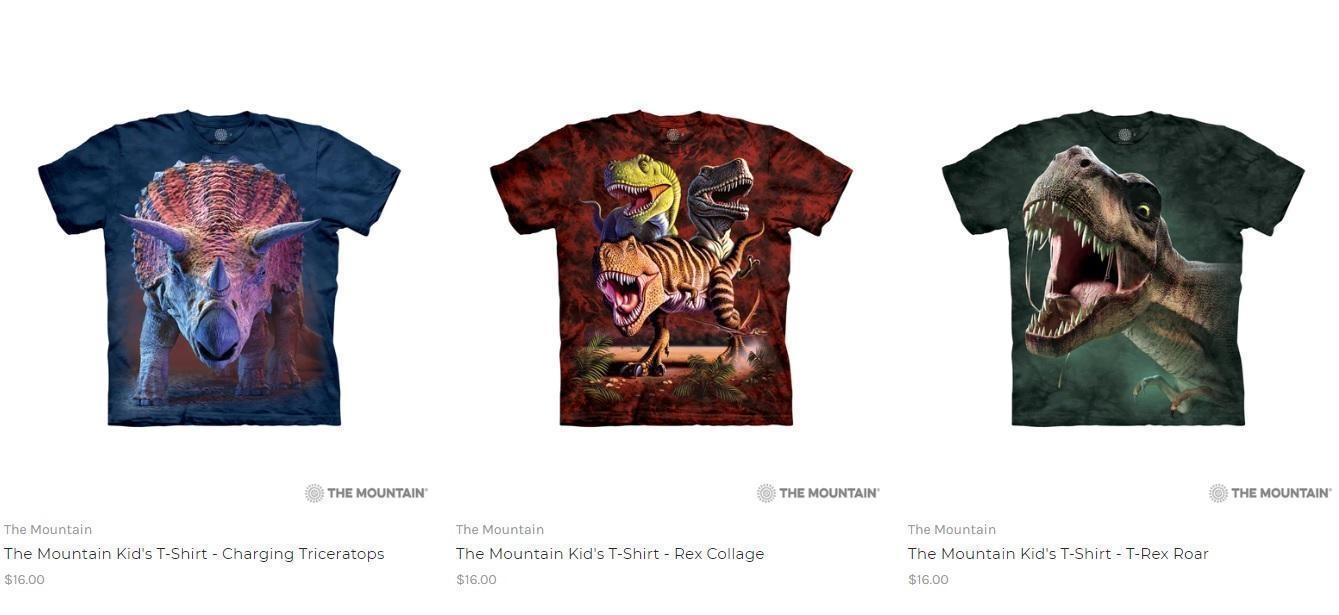
Some ways you can find niches within your niches is by:
- Using tools such as Google’s Keyword Finder or Semrush that help narrow down popular phrases within your niche.
- Analyzing the subcategories your biggest competitors are selling in.
- Looking at your overall target audience data and dividing them into smaller, more niche segments. You can then brainstorm products that appeal to those subsections.
3. Research Products That You’re Crazy Passionate About
Sure, you could add a trending product like shapers to your online store, but are you passionate enough about them to really sell them? When researching new products for your eCommerce business, it’s important to find those trending or pain-solving products that you are excited about.
4. Look for Ways to Add Unique Products You Can Brand
When researching products, you want to find a way to make them unique, as a way to link them to your brand. Ask yourself how you can make this product stand out from the hundreds of other stores selling very similar products.
eCommerce superstars GearBunch understand this concept well, adding their spin on trending products – leggings – and being able to target very specific niches.
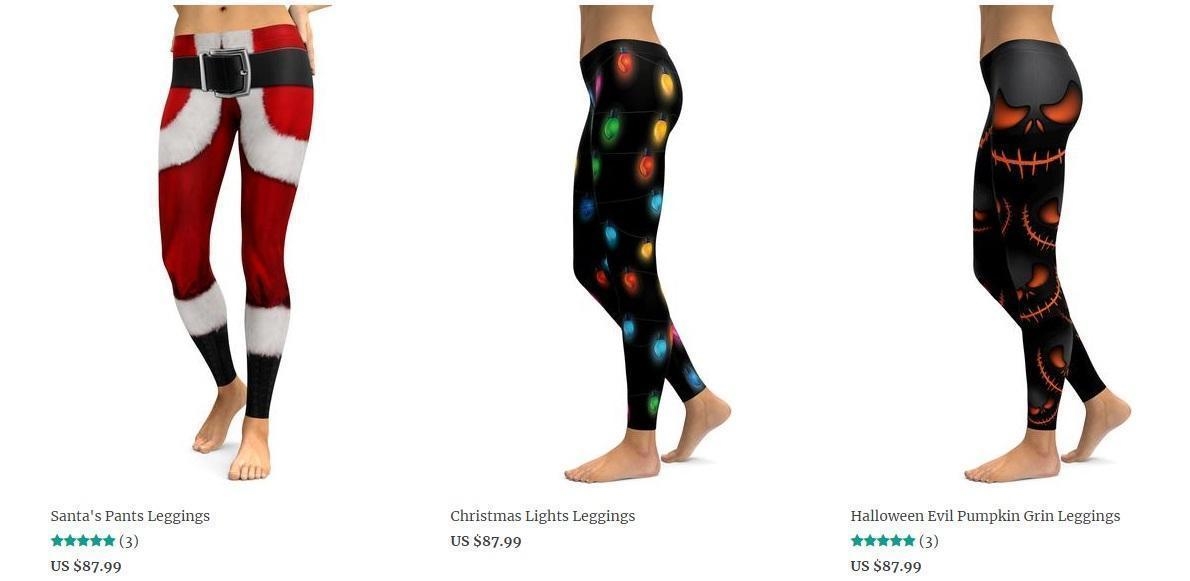
5. Tap into Marketplace Sales Data to Find Best-Sellers
By looking at Amazon, eBay, Google Search, Google Trends, AliExpress, Alibaba, Kickstarter and comparison shopping engine data, you can get an idea of what products are trending at any given time. By using each platform’s search query box, the suggested phrases that populate are a good sign of what is the most popular search item in that category.
Alternatively, if you’re dropshipping, Oberlo is an excellent dropshipping platform that will help you locate trending products. They highlight products based on customer product reviews, product imports, product page views and product orders (over the last 30 days and last 6 months.)
6. Capitalize on Product Trends Early
As we’ve discussed, yes, trending products are good, but it is about how you can adapt them to be unique. Another way you can capitalize on those products everyone wants is to make sure you get on the bandwagon as early as possible, before the market becomes too competitive.
You can find these product trends on the marketplaces we’ve mentioned, and on the following platforms:
- Keyword and phrase trends in keyword research tools
- Online consumer trend publications such as Trend Watching and Springwise
- Consumer product review sites such as Bless This Stuff and Uncrate
- Social curation sites such as Pinterest and Polyvore
- Social forum communities such as The Best of Amazon and Shut Up and Take My Money subreddits
- Instagram trending hashtags (For a list of great Instagram hashtag research tools, visit our Instagram Tools: The Ultimate List For Business & Growth post)
7. Ask the Right Questions
Lastly, no matter how popular a product seems, you want to make sure that it will fit into your business infrastructure while also giving you room to grow, and won’t compromise the service and quality that your eCommerce brand is known for.
Here are a few questions to ask yourself before adding any of the online best-sellers to your store:
- Does the product address a specific pain point?
- What are the startup costs involved in adding this product?
- Will the product fit into your shipping and fulfillment strategies? Is it easy or difficult to ship? Does it take more storage space than existing inventory?
- Does it fit into your store’s brand and is there a way to customize/personalize it?
- Have you chosen a product in a niche that offers expansion possibilities?
- Is it a product your customers will buy more of, or come back and buy again?
- Have you tested the market to make sure your customers will buy it?
- Does the product allow for up-selling?
- How competitive is the niche product’s market?
Bonus Tip: 7 Online Tools to Help You Find Products to Sell Online
1. Commerce Inspector
With Commerce Inspector, subscribed online store owners are able to analyze competitors’ sales, find hit products, discover new competitors and search the products of over 300k online stores.
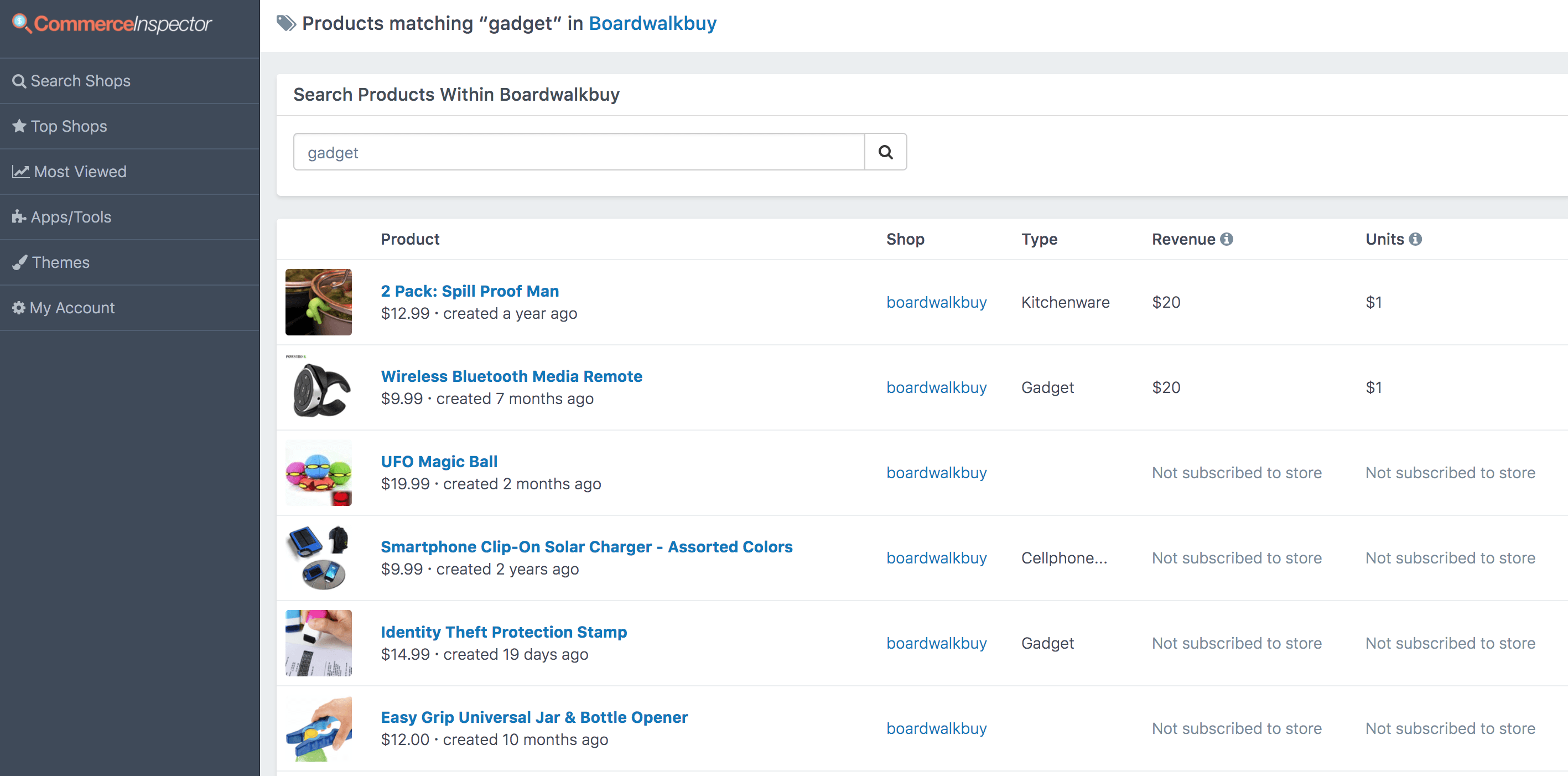
2. Think With Google
Think with Google offers a host of tools online store owners can use to research trends, analyze competitors, and review industry benchmarks and consumer insights. This is a valuable tool when searching for new products for your online store,as it includes data on which brands and products are popular in your niche.
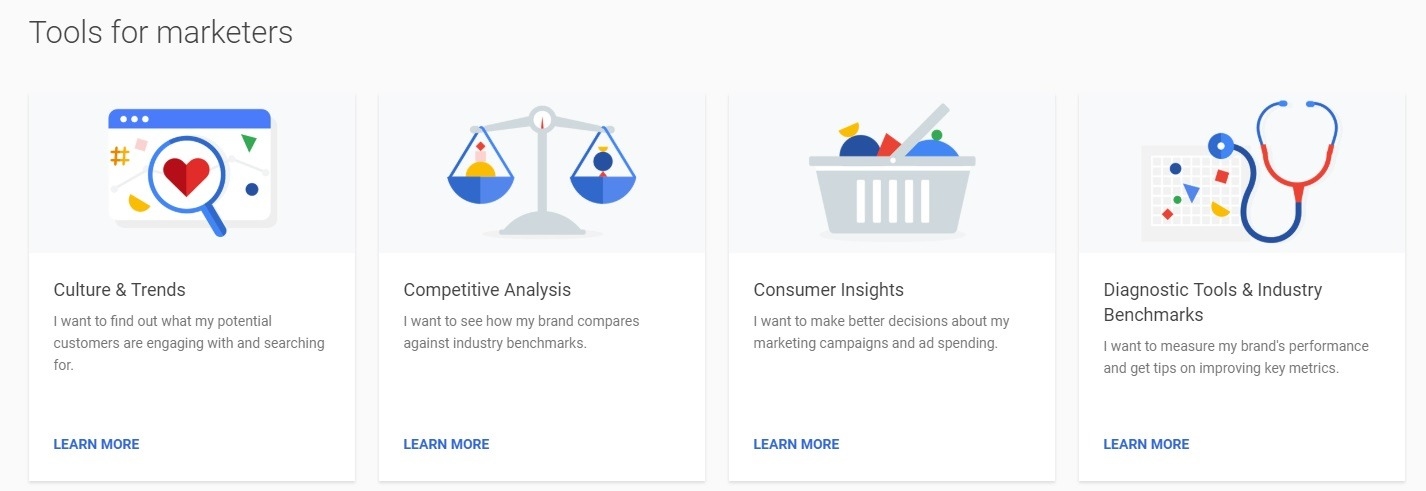
3. Jungle Scout
Decided for Amazon Sellers, Jungle Scout helps you find products and scale your Amazon business. However, they also offer a Chrome extension that, when browsing Amazon, gives you valuable product data. Even if you are not selling on Amazon but use Amazon to research new trending products, this data can help ensure you have all the facts.
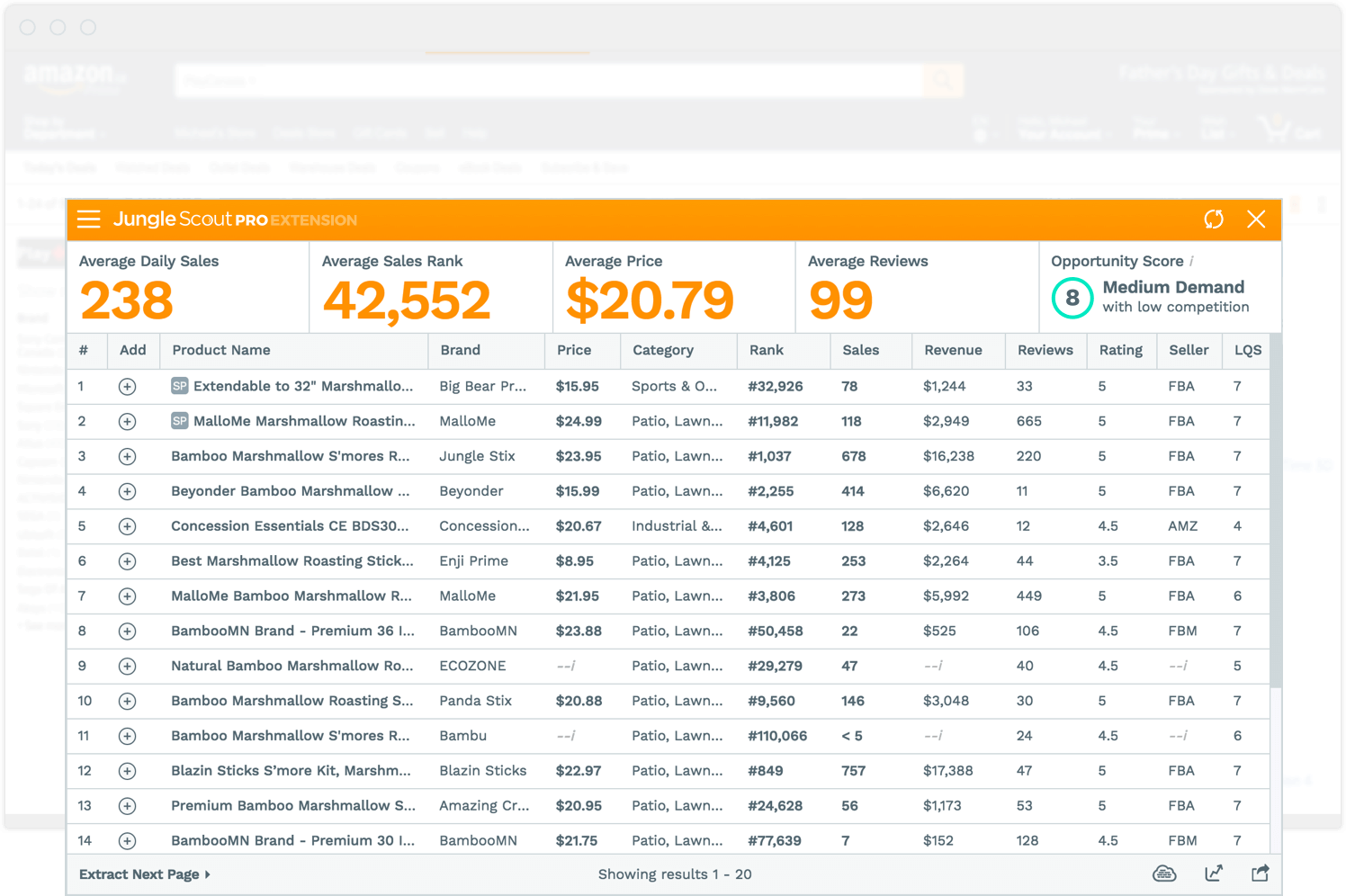
4. Dropship Spy
Dropship Spy platform members have access to a dynamic winning product list that is updated daily, an option for users to request specific product suggestions for their particular niches, and a Facebook Audience Builder Tool. They now also offer an Instagram tool for finding and measuring influencers. Their subscriptions start at $ 15 per month.
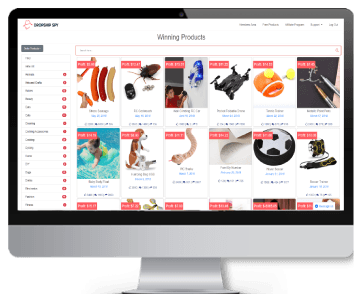
5. Pexda
Pexda is an online platform that helps you find products in your niche based on Facebook ad engagement.
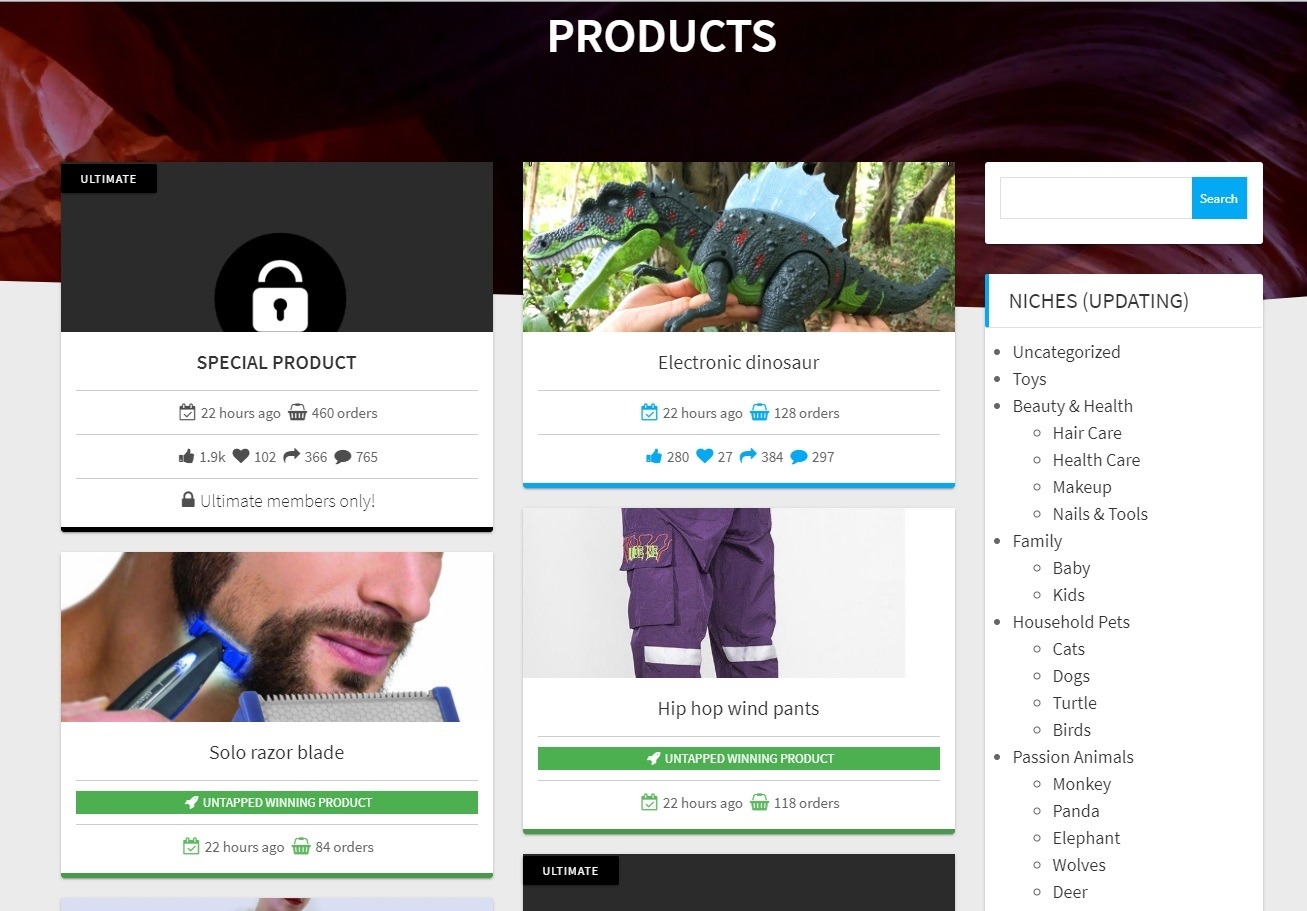
6. eComhunt

eComhunt is a manually-curated product list website showcasing trending products. The product data listed on eComhunt includes the following per product: profit, analytics, engagement, links, Facebook ads, product video, Facebook targeting and offer type. There are free and pro versions.
7. Social Mention
Social Mention is a free online search tool that helps you look for those things around your keywords that your customers may be buzzing about online. Along with keywords and sub-keywords that people are talking about socially, it also gives you popular hashtags that you can then search to see which products people are posting.

—
Ultimately, whatever products you research or see in our best-selling products list, each needs to be considered carefully, as what may work for one store and target shopper demographics may not work for yours!
Have questions? Post them in the comments below.
Digital & Social Articles on Business 2 Community
(109)







